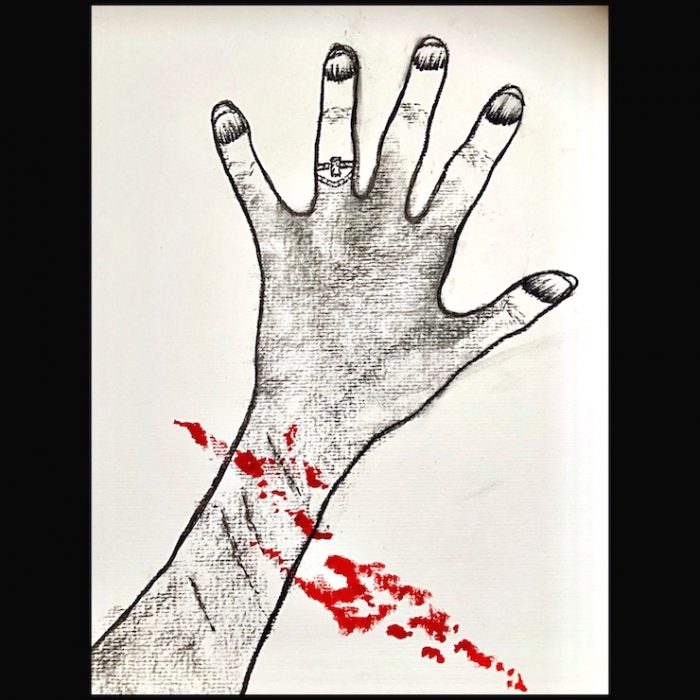Editor’s Note: This website is not designed to, and should not be construed to, provide medical advice, professional diagnosis, opinion, or treatment to you or any other individual, and is not intended as a substitute for medical or professional care and treatment. Always consult a health professional about before trying out new home therapies or changing your diet.
I was a high-strung, loud, honest, and chubby middle schooler.
I spoke my mind, I got flustered during exams, and I had an opinion about everything.
I wanted to be accepted and liked by my peers but I was never ready to do anything to fit in. I could only be “me,” and at times being “me” meant being unpopular. I was called “fat” and I got teased, even bullied, a fair amount. Fortunately, I had the most amazing mother, who surrounded me with an abundance of love and light.
There is an incident that happened when I was in eighth grade that I will never forget—a distinctively difficult moment to share with the world. I have scars on my left forearm to remind me of that day. Scars, that I have not always been truthful about. However, my mom and dad always knew the truth. They protected and guided me, always.
There was a certain individual during my middle school years whom I was affected by, in a negative way. She constantly compared me to other kids and put me down at a time when what I needed most was positive encouragement and motivation. Each time, I tried to lift myself up as soon as possible.
But one day, I lost it.
I was sitting with her and my mom in their apartment. Yet again, she alluded to the notion that I was mediocre compared to everyone else. I felt crushed, but I controlled my tears. My mom did not support the conversation, but chose silence as her weapon.
Frustration and anger started building up within me. I had absolutely no control over my emotions but I did not express my angst to her. If I had, I would have probably been nasty and disrespectful given my emotional state.
I ran back to our apartment, sobbing. I was filled with rage. I felt hysterical. Curtailing emotions was a mammoth task for me. A storm started building within me. I wanted an immediate release.
I went to the kitchen, took a knife and cut my forearm a few times. I felt a sigh of relief as teardrops met my bloody forehand. In that moment, self-destruction made me feel better. It was a release. I was able to let go, at least temporarily.
When my mother came home, she was shocked to see what I had done. She decided to keep the interactions with this individual to a minimum in the foreseeable future.
The wounds healed in a couple of weeks but the scars remind me that I have lived and learned from it. This happened over two decades ago.
Over the years, this incident has played out in my head several times. I have thought about what I could have done differently.
A few weeks ago, I finally sat down to write about this incident. And for the first time, I was able to articulate how and what I realized from this extreme self-harm with clarity.
I started practicing yoga in 2006. My yoga practice has helped me to understand and cultivate the art of controlling the fluctuations of the mind.
It has always been a struggle for me to respond and not react to a situation. A reaction usually tends to be more emotional than a response. And cutting my forearm with a knife was a reaction.
Yoga, with its immense focus on breathing, has taught me how to find union of mind, body, and soul.
We do not have the ability to control the universe. We do, however, have the ability to control the state of our minds. We can stop identifying with our thoughts and emotions and being sucked into them.
It is possible to be calm and compassionate even in the midst of perceived hate. And just like I focus on my breathing to ease the discomfort that creeps into my body in challenging yoga poses, I focus on breathing whenever I am faced with difficult situations in life. This, in turn, allows me to respond in a kind, cohesive manner. In my experience, when the heart and mind are in union, it tends to result in a response rather than a reaction.
Ahimsa or Nonviolence
I have always been taught to “do no harm.” However, I always thought about “doing no harm” toward the external world. I did not realize that, what is within us, is what expands outward.
Yoga is an inward journey—a journey of the self, for the self, and with the self. There are the eight limbs in the Yoga Sutras of Patanjali and the first one is called yamas or moral code/social contract.
The first of the five yamas is ahimsa. This includes nonviolence toward oneself and others in thought, word, and action. The practice of yoga taught me the importance of doing no harm to my own body.
Nearly every yoga class I have ever taken has focused on the motto, “do no harm.” With time, I started embodying this naturally. Now I know when to take a resting pose during my yoga practice, because not taking it could mean doing harm to my body.
After years of a consistent yoga practice, I have finally discovered the yin to my yang—water to balance out the fire within me. Today, I am feisty, passionate, confident, and spontaneous, but with a sense of calmness.
More often than not, I am able to “respond,” and not “react.” I feel an abundance of compassion and kindness toward myself and the universe. I share a loving relationship with the individual associated with the incident above.
And being able to share this difficult story today, with transparency and peace feels like bliss.











Read 4 comments and reply